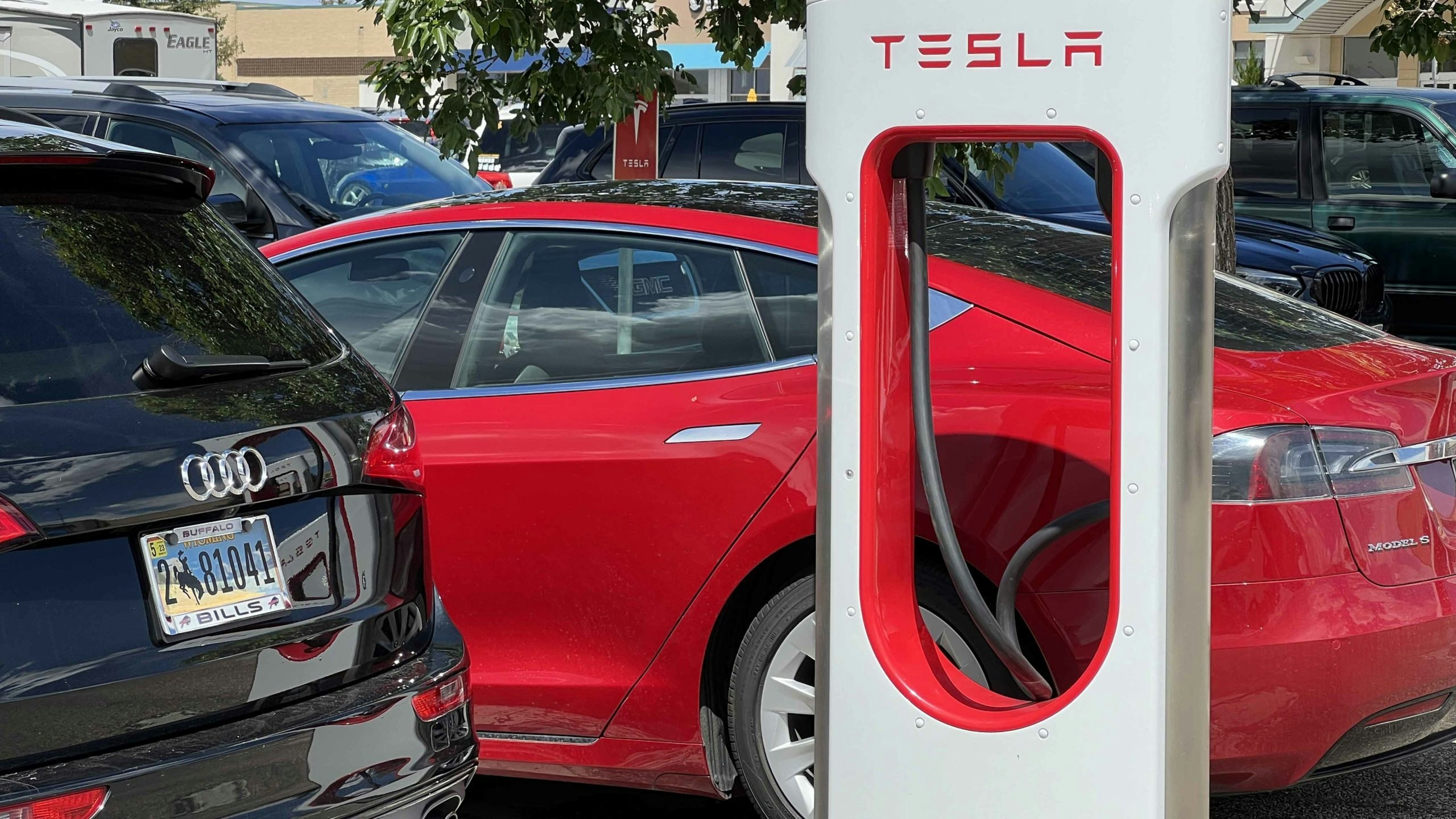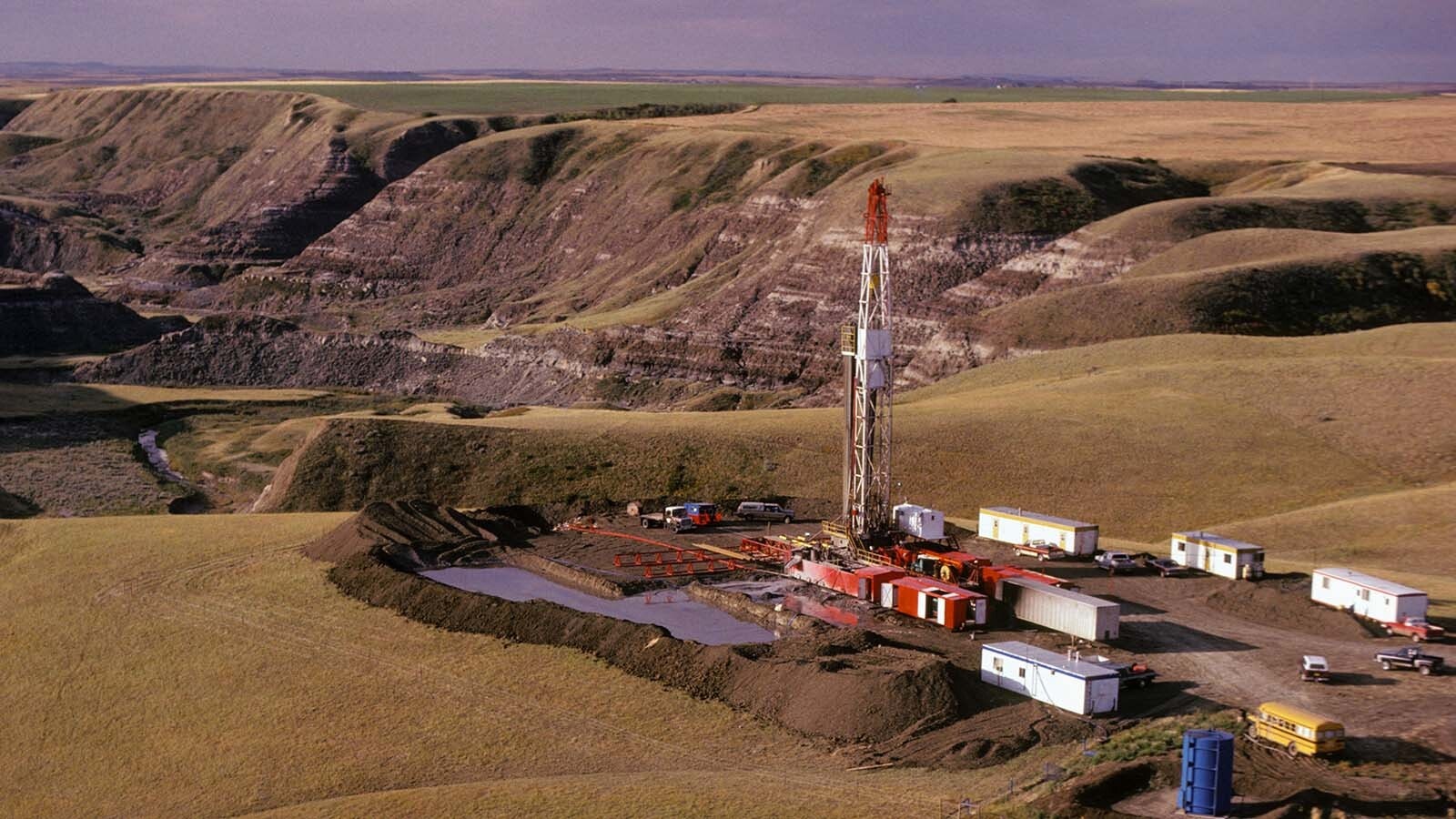By Kevin Killough, State Energy Reporter
kevin@cowboystatedaily.com
Wyoming is charging up for federal approval of its electric vehicle (EV) plan, which it expects to come next week.
Once approved, Wyoming can tap into federal money to build charging stations along interstates and highways.
Wyoming didn’t make the list of 35 states in the recent first round of plan approvals, but once the feds give Wyoming’s plan a thumbs up the state will receive $3.9 million in fiscal year 2022 and about $5 million annually for the next four years.
The program provides 80% of the costs of building new EV charging stations, with the other 20% coming from the private operator.
The state isn’t putting up any money to build out a network of charging stations.
EV Envy
For EV enthusiasts, the stations will open Wyoming to more electrified road trips.
Wild West EV develops revenue-share agreements with property owners to build and operate charging stations throughout Wyoming. The company now has stations in Lander, Riverton, Hudson, Dubois and Cody.
Wild West EV owner Patrick Lawson said he’s excited about the National Electric Vehicle Infrastructure (NEVI) program, and the company is searching for partners to develop proposals to submit when the state sends out requests for them.
“We’re definitely going to submit,” Lawson said.
Lawson said his entire family uses electric transportation. His wife drives a Tesla Model X, he drives a Rivian truck and his son drives a Nissan Leaf. He said it’s no problem getting around the highways in his Rivian.
“I can get from Riverton to Denver without even charging,” Lawson said.
It wasn’t always that easy with the first EV models he bought in 2013. On long trips, he would stay in RV parks so he could plug his car in. Now that EVs have longer ranges and improved charging features — in addition to more charging stations available — it’s getting easier to take his vehicles on the open road, Lawson said.
The feds are pushing for charging stations every 50 miles. With some stretches between Wyoming towns farther apart that that, the state isn’t likely to meet that goal with its NEVI program.
Lawson said that with EVs going 200 to 400 miles on a charge, EV drivers traveling through and around Wyoming will get by.
Car Sense
Wyoming’s per capita EV ownership is among the lowest in the United States.
Data from the Wyoming Department of Transportation shows that 456 electric cars are registered in the Cowboy State. More than a third of those are in Teton County and about a quarter in Laramie County.
Vince Bodiford, owner of the auto enthusiast website The Weekend Drive, said the EV fad is entirely an impractical result of “green politics.”
“Wyoming is almost the poster child for where electric vehicles don’t work and don’t make sense,” Bodiford said.
Unlike gas-powered vehicles, Bodiford said EVs are their least efficient at high speeds. In a large city where trips are short, at low speeds and with lots of stopping time, EVs work pretty well. But that’s really not the driving experience for most Wyomingites.
“From a physics point of view, it’s stupid,” Bodiford said.
He said when you look at the transportation and hauling needs of ranchers, EVs just don’t have a place.
But, that won’t stop the momentum of the EV movement, he said referencing earlier shifts in American history.
At the start of World War II, America’s automotive manufacturers diverted all their energy to the wartime effort in less than two weeks.
“When Detroit or the auto industry puts their mind to making a big industrial shift, it’s going to happen big and fast,” Bodiford said.
Driven by government mandates, the industrial capacity of America’s automobile manufacturers “is way faster than what consumers are ready to accept,” Bodiford said.
Tourism
When it comes to the NEVI program, Bodiford said the state should pursue it. Although Wyoming drivers aren’t going to find EVs practical, he said drivers coming to Wyoming like their electric cars. The state’s tourism industry will greatly benefit if Wyoming’s highways are more EV friendly.
“Anytime there’s an offer for more infrastructure … I’m all for it,” he said. “Do it.”
Aaron Turpen, an automotive writer and supporter of electric vehicles, said besides the benefit to tourism, rental agencies and rideshare company Uber are going electric.
Excluding visitors to Yellowstone National Park, the largest group of out-of-state visitors to the Cowboy State are coming from Colorado, Turpen said, where 16% of all new vehicle sales are EVs.
“It’s just going to keep going up, because the state’s [Colorado] throwing all kinds of incentives at it,” Turpen said.
Turpen said that for most EV owners, an electric car is their second or third vehicle. In some cases, he said, driving a Tesla is a status symbol.
“They’re kind of a new BMW,” he said. “They drive like assholes and they’re really proud of the fact.”
Working With The Feds
The Wyoming Department of Transportation submitted its EV charging station plan by the Aug. 1 deadline.
While it wasn’t on the list of first-round approvals, WDOT spokesperson Jordan Achs said the state worked closely with the reviewing body at the federal agencies overseeing the program. So far, they’ve not heard from those agencies that Wyoming’s plan needs any revisions.
“We’ve been communicating with them on ideas about our plan and what they were looking for … pretty much up until we submitted it,” Achs said.
Wyoming’s funding through the NEVI program pales in comparison to more populous states. The feds are giving $383 million to California and more than $400 million to Texas.





